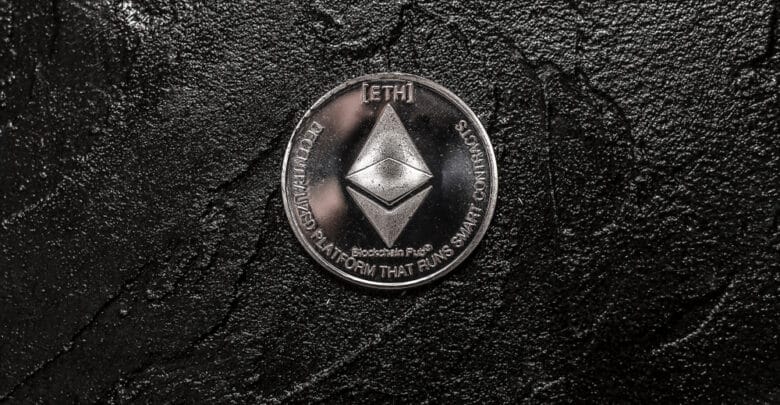What Does Ethereum Sharding Mean for Blockchain Scalability?

Ethereum’s scalability has long been a topic of discussion. Enter sharding, a groundbreaking solution that promises to supercharge the Ethereum network. Think of it as breaking a large puzzle into smaller pieces, where each piece, or “shard,” operates autonomously, handling its transactions and validations.
Previously, Ethereum functioned as a single, cohesive unit, with every node validating every transaction. This led to inefficiencies as user numbers surged. Imagine a movie theater with just one ticket counter; the line would be endless. Sharding is like adding multiple counters, speeding up the process and reducing wait times.
Diving Deeper into Sharding
Sharding is more than just a buzzword in the blockchain world. It’s a game-changer. By splitting a blockchain into interconnected “shards,” each shard operates independently, executing transactions and smart contracts independently.
The beauty of sharding is its ability to harness parallel processing power. Instead of visualizing a single lane, think of a multi-lane highway that facilitates faster, simultaneous transactions. Such a system improves efficiency and pushes the boundaries of scalability. With the introduction of sharding, issues like slow transaction times and exorbitant fees are set to become obsolete. As Ethereum transitions to sharding, it ushers in a transformative period where the blockchain can reach its full potential, fostering a decentralized, rapid, and user-centric platform.
The Mechanics of Sharding
In Ethereum’s current setup, every node processes transactions, leading to scalability concerns as transaction numbers soar. Sharding offers a solution by grouping nodes into “shard chains,” each handling a specific set of transactions. They work together to verify and achieve consensus on transaction blocks.
Ethereum’s sharding vision introduces “shard blobs,” interconnected databases, as a fresh take on shard chains. This is powered by danksharding, an innovative approach. The new structure will feature 64 interconnected databases, with transactions happening concurrently across them.
Moreover, each shard will have a committee of 128 validators, ensuring block proposals and validations every 12 seconds. This revamped system is set to redefine Ethereum’s scalability, ushering in a faster and more efficient blockchain era.
Ethereum Sharding: Elevating Blockchain Scalability
Ethereum’s sharding, combined with layer-2 rollups, is revolutionizing blockchain scalability. Sharding accelerates transaction processing, while rollups focus on off-chain state data storage, enhancing both on-chain and off-chain capabilities.
The full sharding deployment remains under discussion, but indications from the Ethereum community and official channels suggest a potential 2023 launch. Ethereum’s team is refining their sharding strategies, with “danksharding” emerging as a notable concept.
Initial shard chains will prioritize data availability, with direct involvement in smart contracts and transactions to follow. When paired with rollups, this approach is set to significantly increase Ethereum’s throughput, potentially reaching an impressive 100,000 TPS.
Ethereum envisions dynamic shards capable of storing code, executing functions, and managing transactions. Achieving this goal requires seamless cross-shard interactions. The community actively explores innovative solutions, including integrating “smarter” shards and zk-SNARKs for confidential verifications.
Ethereum Sharding Benefits
Scalability: Sharding amplifies Ethereum’s processing capacity, facilitating more simultaneous transactions and reducing network congestion.
Enhanced Performance: Distributing computational tasks among shards reduces transaction times, ensuring a more efficient user experience.
Cost-Efficient Transactions: With increased scalability, less competition for block space leads to reduced transaction costs.
Decentralization: Sharding promotes a more inclusive Ethereum environment, allowing a broader user base to validate transactions and run nodes.
Future-Ready Design: The modular nature of sharding ensures Ethereum’s adaptability to technological shifts and evolving user demands.
Sharding Challenges
Technical Complexity: Introducing sharding demands intricate protocol adjustments and seamless shard-to-shard communication.
Cross-Shard Communication: Transactions spanning multiple shards introduce synchronization challenges and potential processing delays.
Security Implications: Sharding opens up new avenues for potential attacks, emphasizing the need for robust security measures for each shard.
Smart Contract Considerations: Handling smart contracts across shards introduces unique challenges, potentially affecting the overall user experience.
Migration Considerations: Transitioning to a sharded system requires careful planning to ensure smooth integration and minimal disruptions.
Final Thoughts
Ethereum’s sharding approach addresses the blockchain sector’s pressing scalability challenges. By segmenting the network into manageable shards, Ethereum is set to redefine transaction processing and decentralization standards. However, this transformative journey comes with challenges that demand innovative solutions. As Ethereum progresses in its sharding endeavors, the broader blockchain community observes with keen interest. The potential of sharding to redefine Ethereum and the entire blockchain landscape is significant. Through meticulous development and strategic implementation, Ethereum is charting a path toward a more scalable, efficient, decentralized digital economy.
Tokenhell produces content exposure for over 5,000 crypto companies and you can be one of them too! Contact at info@tokenhell.com if you have any questions. Cryptocurrencies are highly volatile, conduct your own research before making any investment decisions. Some of the posts on this website are guest posts or paid posts that are not written by Tokenhell authors (namely Crypto Cable , Sponsored Articles and Press Release content) and the views expressed in these types of posts do not reflect the views of this website. Tokenhell is not responsible for the content, accuracy, quality, advertising, products or any other content or banners (ad space) posted on the site. Read full terms and conditions / disclaimer.





